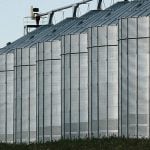
Tag Archives Soil Health

Alberta ranching family teaches cattle to forage through snow
Roxanne and Kevin Ziola transitioned their operation from a mixed farm to a grass-fed ranch, where winter grazing is a key part of their production

Farmers need nitrogen
Let’s focus on increasing the carbon content in our soils

Rebuilding or replacing forage stands
By evaluating current and past management practices, you can avoid repeat mistakes

Grazing management and soil health, Part 2
A look at how to apply adaptive multi-paddock grazing to different, and constantly changing, contexts

Grazing management and soil health
By adapting grazing practices that fit your context and by following the six soil health principles, you can improve the soil on your ranch

Benchmarking and building soil health
Understanding of the significance of what constitutes healthy soil has increased substantially in recent years

No more baby steps
From the Ground Up with Steve Kenyon

Kenyon: The job interview
From the Ground Up with Steve Kenyon

Managing soil salinity for the long haul
Establishing perennial forages is one of the top recommended methods to manage saline soils for the long term
Growing up on a mixed farm in southern Alberta, Alan Iwaasa was no stranger to the costly headaches that saline soils could create. “There were certain land bases that just were poor,” Iwaasa recalls. “For a period of time, there was a lot of effort that was looking at levelling your land and putting in […] Read more
Regenerating grain land
From the Ground Up with Steve Kenyon



